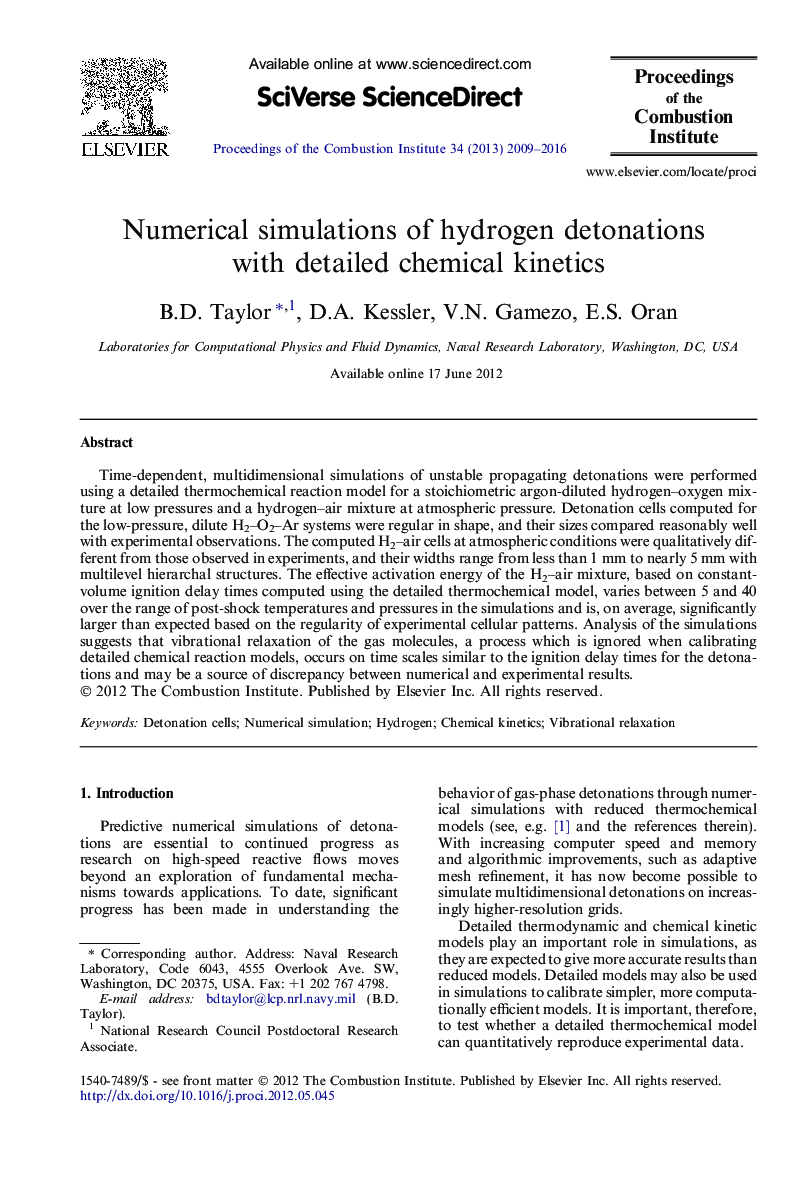| کد مقاله | کد نشریه | سال انتشار | مقاله انگلیسی | نسخه تمام متن |
|---|---|---|---|---|
| 240822 | 1427922 | 2016 | 8 صفحه PDF | دانلود رایگان |
Time-dependent, multidimensional simulations of unstable propagating detonations were performed using a detailed thermochemical reaction model for a stoichiometric argon-diluted hydrogen–oxygen mixture at low pressures and a hydrogen–air mixture at atmospheric pressure. Detonation cells computed for the low-pressure, dilute H2–O2–Ar systems were regular in shape, and their sizes compared reasonably well with experimental observations. The computed H2–air cells at atmospheric conditions were qualitatively different from those observed in experiments, and their widths range from less than 1 mm to nearly 5 mm with multilevel hierarchal structures. The effective activation energy of the H2–air mixture, based on constant-volume ignition delay times computed using the detailed thermochemical model, varies between 5 and 40 over the range of post-shock temperatures and pressures in the simulations and is, on average, significantly larger than expected based on the regularity of experimental cellular patterns. Analysis of the simulations suggests that vibrational relaxation of the gas molecules, a process which is ignored when calibrating detailed chemical reaction models, occurs on time scales similar to the ignition delay times for the detonations and may be a source of discrepancy between numerical and experimental results.
Journal: Proceedings of the Combustion Institute - Volume 34, Issue 2, 2013, Pages 2009–2016
